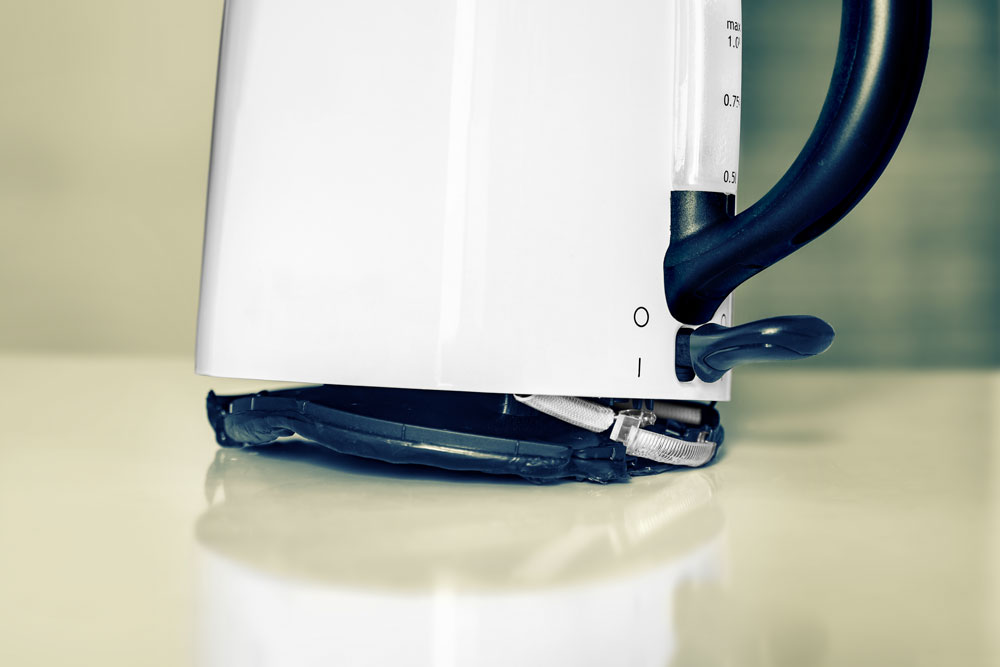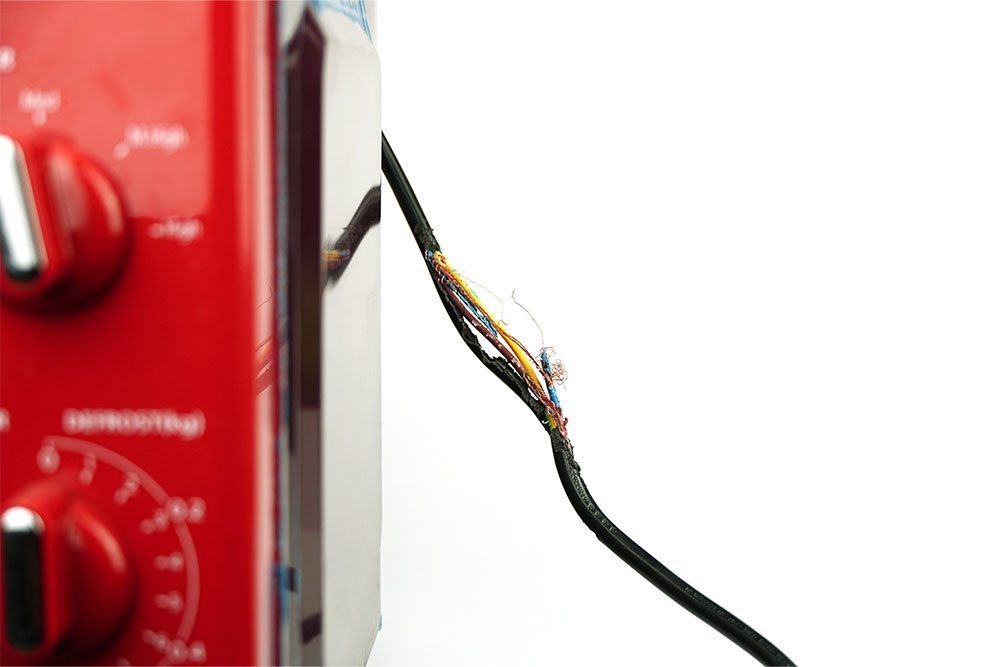
For any workplace, a well-prepared risk assessment saves time, stress and, potentially, lives. But if you’re reading a health and safety blog, you probably know this already.
This guide looks specifically at PAT testing risk assessments and how they can help you determine your PAT testing requirements. Because, by identifying what to PAT test and when, you save time, money and support your electrical safety obligations.
There’s no such thing as a specific PAT testing risk assessment. Really, we’re referring to electrical safety risk assessments. The guidance here though will walk you through how you can use your electrical safety risk assessment to establish your PAT test plans and why you should do it.
Why Do I Need a PAT Testing Risk Assessment?
There are four reasons you need a PAT testing risk assessment.
First, it’s a legal duty. The Health and Safety Executive (HSE) says you must assess the risks to both employees and members of the public that exist in your workplace. This includes risks caused by electrical hazards.
Second, it helps keep you compliant with other regulations. While PAT testing itself is not a legal obligation, you do have a duty to ensure electrical safety in the workplace. The Provisions and Use of Work Regulations 1998 make it a legal requirement for employers to ensure all electrical equipment is maintained in a safe, working condition. PAT testing is a straightforward way to achieve this.
Third, it’s cost-effective. Knowing what to PAT test and when, saves you time and money. You might find you’ve been testing electrical equipment unnecessarily. Or you might identify equipment that needs more regular PAT testing to prevent costly or dangerous faults.
Finally, it protects workers and your business. Around a quarter of all workplace fires are started by faulty electronics. And while fatal electrocution at work is relatively rare, it does still happen. In an average year, around five people die from electric shocks at work, with most of these fatalities happening in construction. Unsurprisingly, this is one industry where PAT testing recommendations are most stringent.
What Does a PAT Testing Risk Assessment Include?
There’s no single format for risk assessments. However, the HSE provides guidance that outlines the basic framework.
A PAT testing risk assessment essentially follows the same steps for any risk assessment. Let’s take a look at how they should be applied to Portable Appliance Testing.
As we work through these steps, bear in mind, you’ll need to identify the risk factors in every area of your workplace. This means you’ll likely have to complete multiple risk assessments – one for your office area, one for your kitchen area and so on.
Step 1: Identify the Hazards
First, you need to identify the electrical hazards. A thorough electrical safety risk assessment looks at both appliances themselves and any environmental hazards.
You should consider the class and type of any appliances when you perform your risk assessment.
The Class of the Equipment
There are three classes of electrical appliance:
- Class 1 – have an Earth wire and only one layer of insulation
- Class 2 – no Earth wire needed because of additional insulation
- Class 3 – low-voltage and often battery powered
Class 1 appliances generally have the greatest risk potential since they only have a single layer of insulation. Class 3 appliances are generally considered to pose minimal risk as they’re low voltage so potential shocks are unlikely to cause serious harm.
The Type of Equipment
Small appliances that are frequently used or moved are more likely to be damaged so might need more frequent testing. But this consideration will need to be balanced against the likely harm they could cause. For example, some battery-powered appliances can’t significantly harm anyone and aren’t even recommended to be PAT tested at all.
While the class and type of appliance will help you determine its PAT testing requirements, environmental hazards will also affect your decision making. But this often comes in the next step.
Step 2: Assess the Risks
To assess the electrical risk, you should broadly consider the equipment and how it’s used.
This includes considering:
The Working Environment of the Equipment
Equipment that’s often moved around a workplace is more likely to be damaged and develop a risky electrical fault.
Risk factors are even higher if appliances are likely to be used in harsh environments, which will make faults more likely. For example, if the workplace is a construction site, appliances are more likely to be used in dusty, wet or adverse weather conditions.
You should also consider where equipment is stored – is it possible it will come into contact with water or combustible materials, for example?

Who Might Have Contact with the Equipment
Who uses the equipment and are they sufficiently trained?
Is there any chance of members of the public coming into contact with the equipment? Are these members of the public likely to be children or the elderly and therefore more likely to be seriously injured by an electric shock?
These are all factors to consider when calculating risk.
How Often the Equipment is Used
This is crucial in determining how likely the appliance is to be damaged and subsequently develop a fault. Older equipment that’s heavily used is more likely to develop faults compared to newer, less-used equivalents.
How Often the Equipment is Serviced or Inspected
Equipment that’s serviced regularly will be less likely to develop faults and therefore less risky. But be mindful that if an appliance needs frequent servicing or repair, it might be safer to replace it with a newer, more reliable version.
You should also check when an appliance was last PAT tested or visually inspected. The longer appliances are left without testing, the higher the risk.
How the Equipment is Installed
Appliances installed with residual current devices (RCDs) are lower risk. Also consider if cables are tidy and run in ways that will minimise wear and tear.
Step 3: Control the Risks
After you’ve identified the hazards and the severity of risk they pose, you need to determine the control measures you can put in place.
It’s important to note the HSE acknowledges you cannot entirely eliminate risk from a workplace, no matter how many controls you put in place. Instead, you need to do what’s reasonably practical. This means you’ve properly considered the risk and balanced it with the control measures you’ve put in place.
There are three main strategies for controlling risk:
- Reducing the likelihood harm will happen
- Reducing the severity of harm if it occurs
- Reducing both the likelihood and severity simultaneously
Below are some common control measures for electrical appliance hazards you might find appropriate for your workplace.
User Checks
One of the first and simplest control measures you should implement is the user check. Staff should be trained to visually scan any appliance for obvious faults before they use it. Employees should know never to use faulty appliances and to report them immediately.

Using Alternatives
This control measure covers a few different things you might do:
- Replace frequently damaged equipment with a more reliable or rugged version
- Replace equipment with a less hazardous counterpart, for example, a Class 2 appliance or one with a lower voltage
- Find an alternative method that eliminates the electrical hazard entirely (probably not viable for most workplace procedures but bear it in mind)
Other Control Measures
It would be impossible to list every possible control measure here because every workplace is different. You need to consider the risks you’ve identified in your workplace and what you can do to control them.
Common control measures include:
- RCDs
- Moving appliances – another location might reduce the risk
- Personal Protective Equipment
- Staff Training
- And, of course, PAT Testing
Your risk assessment should state clearly which appliances will need PAT testing and how often it will happen.
Step 4: Record Your Findings
Make sure you keep a detailed record of your findings. It’s a legal requirement for businesses with more than five employees and a useful tool for smaller companies.
You can keep physical or digital files, whatever works best for your organisation. However you keep them, it’s recommended to store risk assessments for five years. A risk assessment might help prove compliance if you ever find a legal case or investigation is brought against you.
Step 5: Review
You will need to regularly review your risk assessment and update the control measures as needed.
Regular reviews are a legal requirement but there’s no specific guideline on how regular they need happen. However, as long as nothing has drastically changed in your business, it’s recommended you review control measures every 12 months.
I Know What Needs to be PAT Tested – Can I Do It Myself?
It’s entirely possible you or someone in your organisation can fulfil your PAT testing requirements. It depends on the findings of your risk assessment.
A lot of companies that operate in low-risk environments keep PAT testing in-house. They just need to ensure that the person performing the PAT testing is competent.
And competency is determined by sufficient training, skills and knowledge, not an official qualification.
How Do I Start PAT Testing?
Our online PAT Testing Course will give you or your employees the understanding and skills to confidently PAT test electrical equipment. You’ll get access to clear visual demonstrations of every step of the PAT test procedure plus a free e-checklist to guide you through the process.
You’ll be able to implement one of the most effective electrical risk control measures yourself, eliminate the cost of external PAT testers and help make your workplace safer.




























































































































































































































































































































































































































































































































































































































































































































































